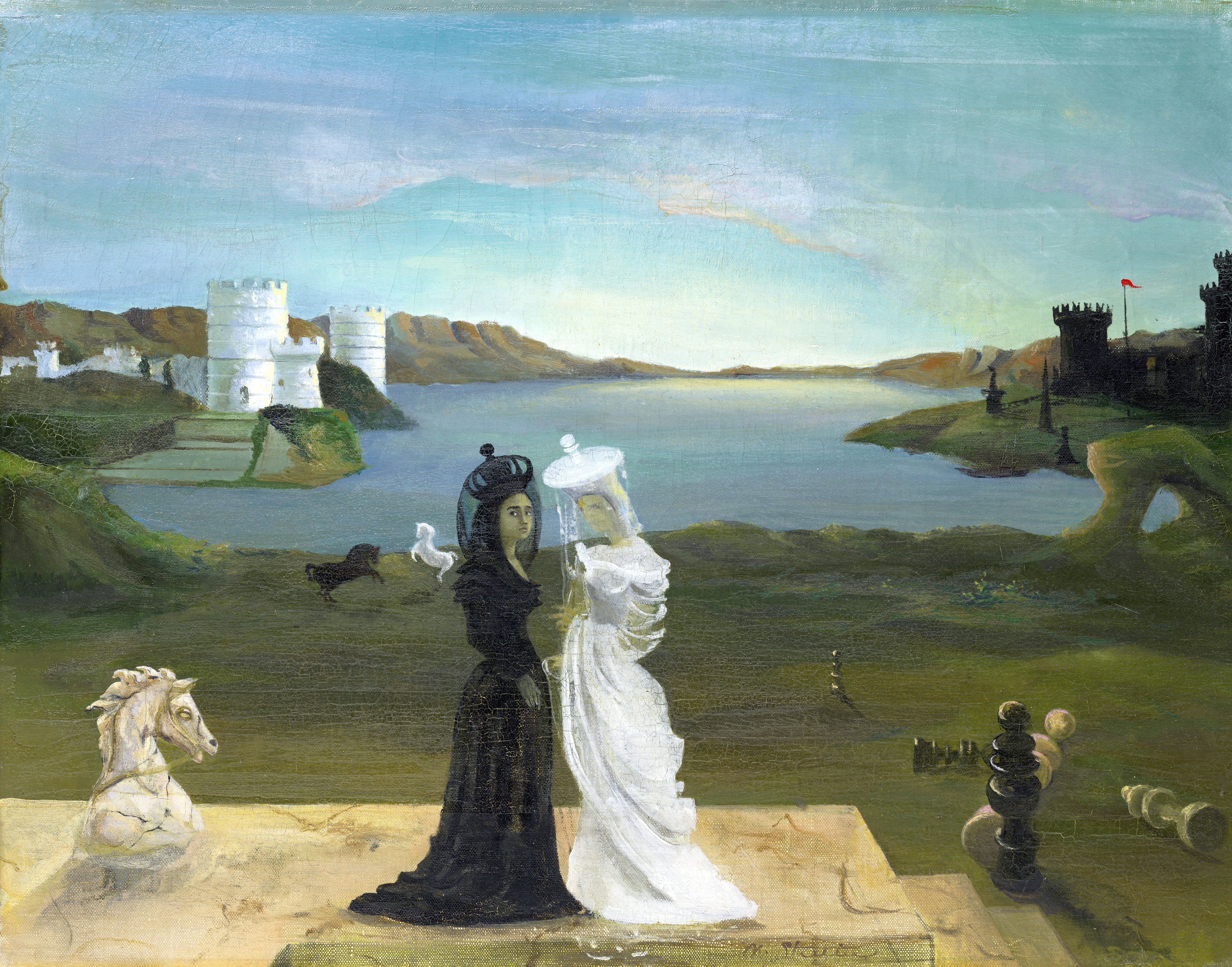The black walls of the tiny antechamber fold neatly around the spectator. The desolate notes of an invisible cello ““ the slashing of bow against strings ““ echo the whimsical words dancing in a sinister cursive up the right wall: “In Wonderland.”
Stepping into the newest exhibition in the Los Angeles County Museum of Art’s Resnick Pavilion may feel a lot like tumbling into Alice’s rabbit hole. But the show, “In Wonderland: The Surrealist Adventures of Women Artists in Mexico and the United States” also acts as a sort of wormhole that provides an alternative history to the male-dominated surrealist art movement that began in the early 20th century.
“In Wonderland” is being touted as the first large-scale retrospective of women surrealist artists working in Mexico and the United States, including Frida Kahlo, Leonora Carrington, Louise Bourgeois and Remedios Varo, among others. Of the 47 artists, many are virtually unknown in the bigger picture of art history.
“Until the 1970s, most art historians were unaware of the contributions of women artists,” said Charlene Villasenor-Black, a UCLA art history professor. “That has been changing over the last decades, but there still is work to do recovering the contributions of women to the visual arts.”
The show contains about 175 works, chosen by curators Ilene Fort and Tere Arcq, which depict the ways in which women used art to reflect upon issues of sexuality, creative production and politics. Many of the works also explore the limitations imposed by patriarchal expectations upon creative women.
“Surrealism … started out as a literary and artistic movement, but (it) is really a philosophy and a way of life,” said Arcq, adjunct curator at Mexico City’s Museo del Arte Moderno. “It began as a critique of reason and all-established institutions, so it is revolutionary, in essence. … In this exhibition, we try to show this complexity from the woman’s point of view.”
The show is organized thematically to highlight various focal points of the movement, with sections ranging from “Games and Technical Innovations” to “Identity: Portraiture.” While the majority of the exhibition consists of traditional oil paintings and photographs, some films, sculptures and assemblage pieces are scattered throughout the gallery.
In several portraits, a pair of beetle-black eyes stare out from beneath one of the most famous unibrows in modern art history. Though Frida Kahlo is not always referred to as a surrealist, her pieces ““ or at least her face ““ may be the most familiar to visitors.
While Kahlo might be the biggest name in the exhibition, the show brings as much, if not more, attention to lesser-known artists, many of whom went through short surrealist phases in their youth.
Arcq and Fort agreed on the parameters they would use: The women either had to call themselves surrealists, express an interest in surrealist ideas, such as the unconscious, or their work had to look surreal.
The curators often stumbled upon new artists after following tangled chains of artist associations. Fort said her favorite discovery was Spanish-born painter Remedios Varo, who, according to Arcq, is as popular as Kahlo in Mexico.
The eerie cello that greets visitors at the entryway comes from a looped excerpt of a 1943 short experimental film by Maya Deren called “Meshes of the Afternoon.” According to Fort, “Meshes” was filmed up the Hollywood Hills near LACMA, and that Los Angeles was one of the four major surrealist cities in the U.S. at the time.
The excerpt shown includes classic surrealist iconography and themes, including the eye, the dream, repetition and a sense of mystery ““ making it a fitting way of introducing the rest of the show, Fort said.
According to Fort, while “wonderland” can refer to the world of the subconscious and dreams that the surrealists loved so much, it also refers to the United States and Mexico, to which many of these artists fled from their homes in Europe.
Often, it wasn’t until they reached America that they began to flourish creatively.
“I want these women to have a more accurate place in the representation of surrealism. It shouldn’t be about gender,” Fort said. “You have to do a show about gender to get people to stop talking about gender and start focusing on the art.”
